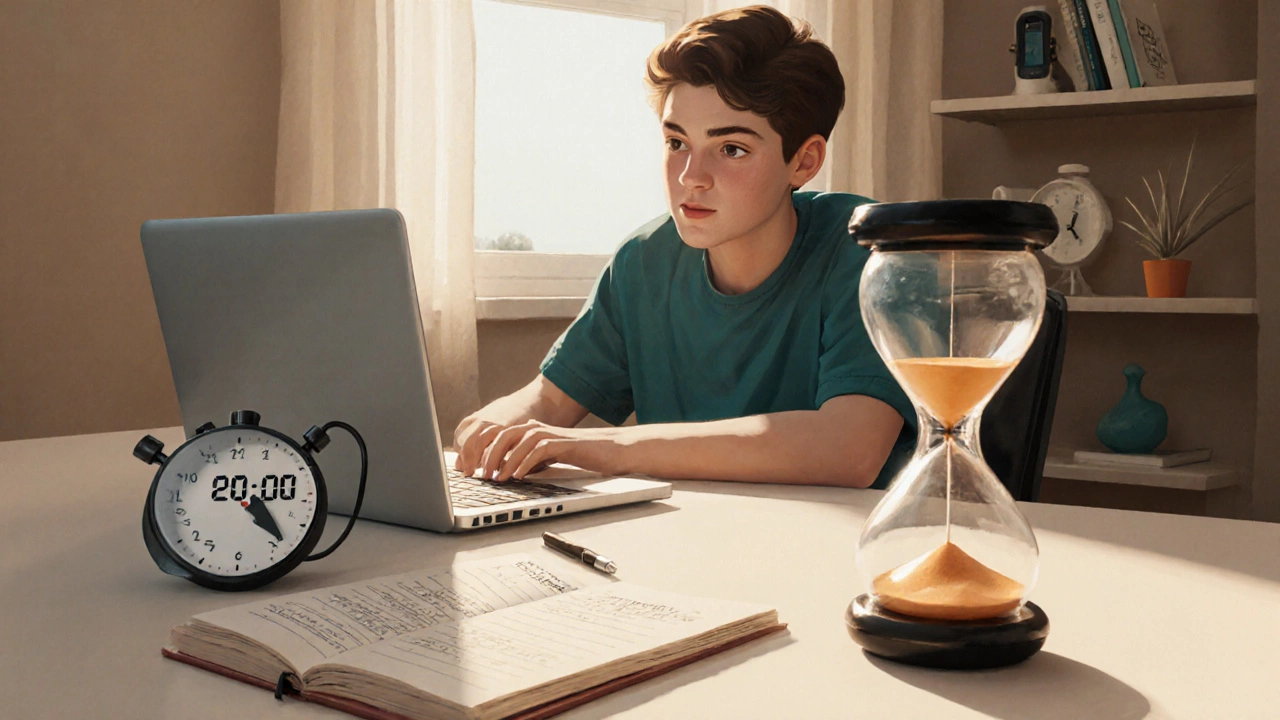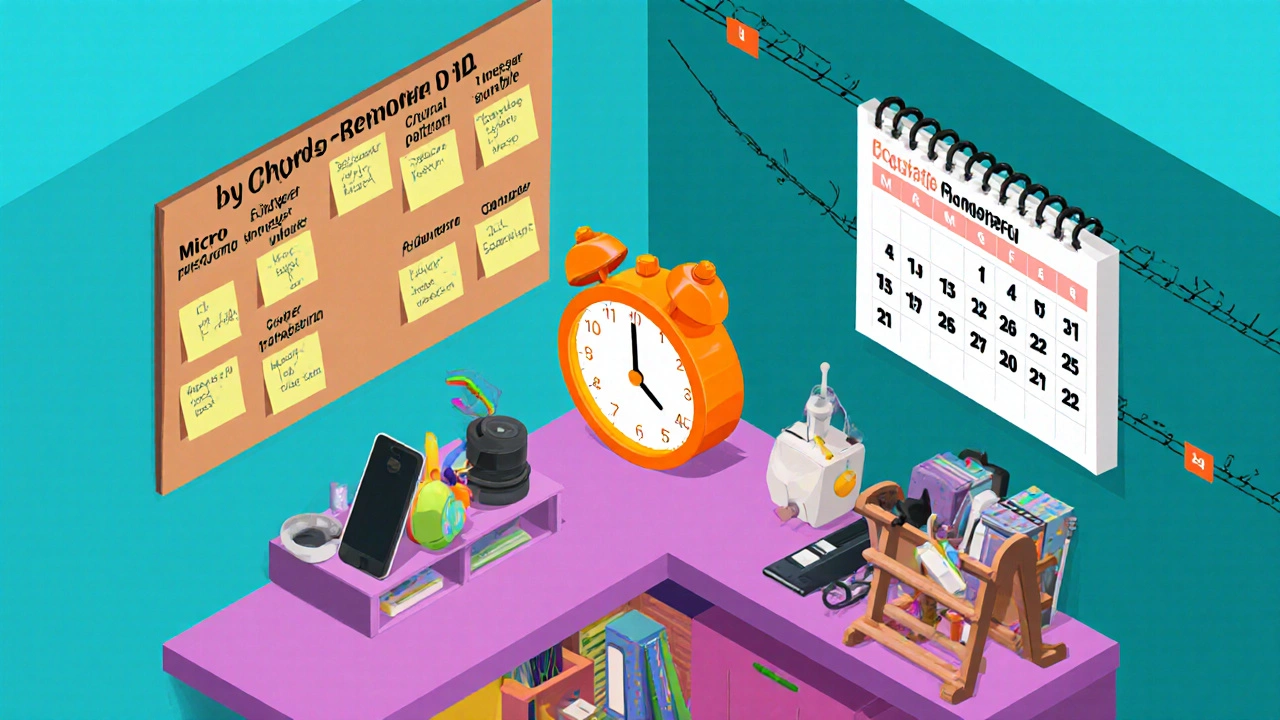
20 Hour Skill Learning Planner
Plan Your 20-Hour Learning Sprint
Follow the 7-step blueprint to master a new skill in just 20 focused hours.
Your Learning Plan
Skill:
Goal:
Progress: 0/20 hours completed
- Break the skill into micro-tasks
- Eliminate distractions before each session
- Record your practice for immediate feedback
- Review and adjust each session
When you hear about the 20 hour rule is a learning framework that claims you can acquire basic proficiency in a new skill with roughly twenty hours of focused practice, you probably wonder if it’s a myth or a real shortcut. The short answer: it works, but only if you follow the built‑in principles. Below you’ll get a clear picture of what the rule is, why it clicks with how our brains learn, and a step‑by‑step plan you can start using tonight.
Key Takeaways
- The 20 hour rule says you need about 20 focused hours to reach a usable level in almost any skill.
- It relies on breaking the skill into sub‑tasks, removing barriers, and using short, high‑quality practice blocks.
- It differs from the famous 10,000‑hour mastery model - you’re aiming for competence, not world‑class expertise.
- Neuroplasticity, habit stacking, and the Pomodoro technique are the scientific backbones that make the rule practical.
- Follow the 7‑step blueprint to set up your own 20‑hour learning sprint and avoid common pitfalls.
What Exactly Is the 20 Hour Rule?
The term was popularised by author Malcolm Gladwell in his book Outliers, where he referenced the 10,000‑hour rule for mastery. Gladwell later clarified that a lot of people only need a fraction of that time to become functional. The 20 hour rule, first articulated in a 2014 TED‑Ed video, boils the idea down to a concrete, actionable promise: 20 hours of deliberate, distraction‑free practice will get you past the “plateau of incompetence” into a stage where you can actually do the skill without feeling lost.

Why It Works - The Science Behind the Rule
Three neuroscientific concepts explain why twenty hours are enough for basic competence.
- Neuroplasticity is the brain’s ability to rewire itself based on repetitive activity. Research from the University of California shows that just eight hours of focused practice can create measurable changes in motor pathways.
- Deliberate practice - a term coined by psychologist K. Anders Ericsson - emphasises quality over quantity. Short, intense sessions that target weak points trigger faster improvement than mindless repetition.
- Habit stacking pairs a new practice routine with an existing daily habit, making it easier to start and stick with the sessions. This reduces the activation energy needed to sit down and work.
Combine these ideas with the Pomodoro technique, which structures work into 25‑minute bursts followed by short breaks, and you have a proven framework for squeezing the most out of each hour.
Step‑by‑Step Blueprint: Your 20‑Hour Learning Sprint
- Choose a specific outcome. Instead of “learn guitar”, define “play three chords and a simple song”. Clear goals let you measure progress.
- Break the skill into micro‑tasks. Identify the smallest actions that build the ability - e.g., finger positioning, strumming pattern, chord transition.
- Eliminate barriers. Turn off notifications, gather all tools beforehand, and set a dedicated space. The fewer interruptions, the deeper the focus.
- Schedule 20 one‑hour blocks. Using a calendar, book twenty 60‑minute slots over two weeks. Treat them like non‑negotiable meetings.
- Apply the Pomodoro method. Within each hour, do four 25‑minute Pomodoros with 5‑minute breaks. The short bursts keep mental fatigue low.
- Use immediate feedback. Record yourself, use a metronome, or ask a mentor to correct mistakes right away. Rapid correction prevents bad habits.
- Review and adjust. After each session, note what improved and what still feels shaky. Tweak the next micro‑task accordingly.
By the time you finish the twentieth hour, you’ll have a functional skill set that lets you perform without staring at a manual. The feeling of competence is a powerful motivator to keep going, should you decide to deepen your expertise.

Comparing the 20‑Hour Rule to the 10,000‑Hour Rule
| Aspect | 20‑Hour Rule | 10,000‑Hour Rule |
|---|---|---|
| Goal | Functional competence | World‑class mastery |
| Time Investment | ~20 hours total | ~10,000 hours (≈5years full‑time) |
| Practice Style | Deliberate, focused bursts; barrier removal | Highly structured, often under expert mentorship |
| Typical Users | Hobbyists, career‑switchers, busy professionals | Athletes, musicians, surgeons aiming for elite status |
| Outcome Measurement | Can perform basic tasks independently | Ability to innovate, perform at peak under pressure |
Both models agree that practice matters, but they serve different ambitions. If your aim is to be able to speak conversational Spanish for a trip, the 20‑hour sprint is more realistic than chasing 10,000 hours of fluency.
Common Mistakes and Pro Tips
Mistake 1: Treating the rule as a shortcut to expertise. Remember, the goal is competence, not celebrity‑level skill.
Tip: Celebrate the point where you can finish a task without looking up instructions. That milestone signals you’ve crossed the learning curve’s steepest part.
Mistake 2: Skipping the barrier‑removal step. Leaving your phone on or trying to practice in a noisy café will bleed focus.
Tip: Create a “learning kit” - notebook, tool, timer - and keep it ready. Pulling it out becomes a cue, reinforcing habit stacking.
Mistake 3: Using vague goals. “Learn Photoshop” leads to scattered practice.
Tip: Adopt the “SMART outcome” method - Specific, Measurable, Achievable, Relevant, Time‑bound. For Photoshop, a SMART outcome could be “Create a 1080px social media graphic with layers and text in 8hours”.
Frequently Asked Questions
Can the 20 hour rule be applied to physical skills like tennis?
Yes, but you’ll need to factor in warm‑up time and recovery. Split the 20 hours into short, technique‑focused drills - for example, ten 2‑hour sessions concentrating on serve, footwork, and backhand.
What if I can’t find 20 one‑hour blocks?
The rule is flexible. You can break the hour into four 15‑minute Pomodoros spread across the day, as long as the total adds up to twenty hours.
Is the 20 hour rule backed by scientific studies?
While the exact "20‑hour" number is a heuristic, studies on deliberate practice and neuroplasticity show substantial skill gains after as little as 8-12 hours of focused effort.
How does the 20 hour rule differ from “learn it in a day” tips?
One‑day challenges often skip the deliberate practice component and rely on passive exposure. The 20 hour rule insists on active, feedback‑driven sessions, which lead to lasting competency.
Can I use the rule for mental skills like public speaking?
Absolutely. Record short talks, watch the playback, and refine one aspect per session (voice projection, eye contact, pacing). After twenty hours you’ll feel far more comfortable on stage.
